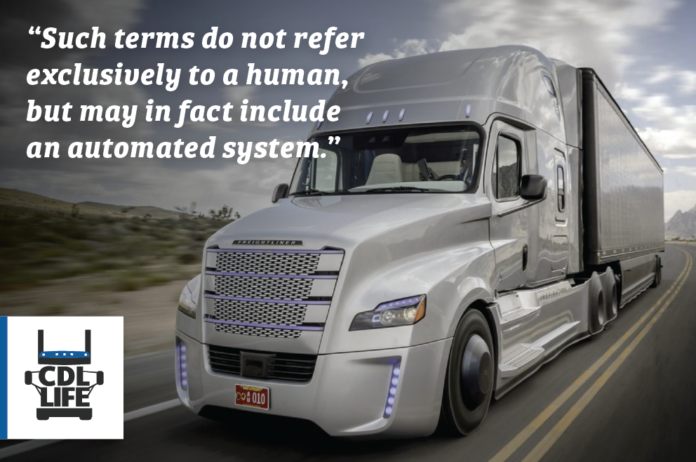The U.S. Department of Transportation yesterday released guidelines on automated vehicles. The guidelines highlight three main areas of emphasis: safety, technology and regulations. The guidelines will relax current safety standards and puts the onerous on vehicle manufacturers to defend their vehicles’ safety.
In the release, “Preparing for the Future of Transportation: Automated Vehicle 3.0,” the DOT outlines the three areas of emphasis. According to the DOT:
“The United States Department of Transportation (U.S. DOT) has established a clear and consistent Federal approach to shaping policy for automated vehicles, based on the following six principles.
1. We will prioritize safety.
Automation offers the potential to improve safety for vehicle operators and occupants, pedestrians, bicyclists, motorcyclists, and other travelers sharing the road. However, these technologies may also introduce new safety risks. U.S. DOT will lead efforts to address potential safety risks and advance the life-saving potential of automation, which will strengthen public confdence in these emerging technologies.
2. We will remain technology neutral.
To respond to the dynamic and rapid development of automated vehicles, the Department will adopt fexible, technology- neutral policies that promote competition and innovation as a means to achieve safety, mobility, and economic goals.
This approach will allow the public—not the Federal Government—to choose the most effective transportation and mobility solutions.
3. We will modernize regulations.
U.S. DOT will modernize or eliminate outdated regulations that unnecessarily impede the development of automated vehicles or that do not address critical safety needs. Whenever possible, the Department will support the development of voluntary, consensus-based technical standards and approaches that are fexible and adaptable over time. When regulation is needed,
U.S. DOT will seek rules that are as nonprescriptive and performance-based as possible. As a starting point and going forward, the Department will interpret and, consistent with all applicable notice and comment requirements, adapt the defnitions of ‘driver’ and ‘operator’ to recognize that such terms do not refer exclusively to a human, but may in fact include an automated system.”
The DOT’s guidelines specifically addresses drivers; the DOT announced it will “no longer assume” commercial drivers have to be humans, or truck drivers.
Federal Highway Administration plans new edition of National Traffic Control Manual to address innovation, get ready for Automated Vehicles: https://t.co/ggjqQ4xMhy #Innovation #AutomatedVehicles
— Federal Highway Admn (@USDOTFHWA) October 5, 2018
In addition, the guidelines will allow autonomous trucks to travel across the country without violating laws, Bloomberg reported.
The feds will no longer assume that a commercial vehicle driver is human, according to ‘Automated Vehicles 3.0’ guidance. https://t.co/QUYuhgIqGF
— Waterloo Insurance (@WaterlooInsATX) October 5, 2018
While the guidelines would allow autonomous trucks to travel freely across the country, Bryant Walker Smith, an autonomous vehicle law expert at the University of South Carolina, said that some states, including California, which has a a ban on autonomous trucks, some states and local municipalities may still push to ban autonomous trucks.
“Truck automation could be an area where there is some active preemption of state and local laws, especially if there are some states that are more resistant to truck automation. I can see something of a showdown,” Smith said.
“Today’s policy is not law, but it does signal where USDOT wants to go,” he said. “The agency wants to, and believes it can, give a green light to truck automation. Actually changing or at least interpreting federal rules would be a next step — and it’s at this point that USDOT might preempt California’s ban, at least with respect to interstate trucking.”
